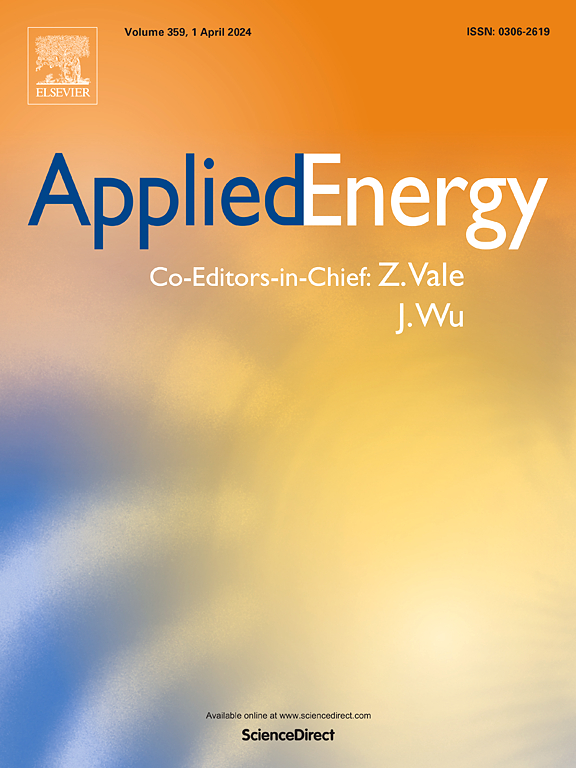燃料电池系统阳极氮含量估算及吹扫策略优化
IF 10.1
1区 工程技术
Q1 ENERGY & FUELS
引用次数: 0
摘要
从阴极渗透的氮在燃料电池系统的阳极回路中积累,增加了电池堆退化的风险,降低了发电量。预测和优化阳极氮含量对提高燃料电池系统的耐久性和效率至关重要。传统的氮预测方法是基于堆叠电压。然而,降解对燃料电池堆电压的影响比阳极氮含量更大。因此,传统的基于电压的估算阳极氮含量的方法不适用于逐渐退化的电池堆。本文建立了一种基于流动动力学的在线氮含量预测模型,并通过实验验证了该模型的绝对误差范围为- 1.5% ~ + 2%。此外,还对阳极氮含量对燃料电池系统能量效率的影响进行了建模和分析。基于阳极氮含量估算模型和能量效率模型,提出了一种控制阳极氮含量的吹扫策略。以最佳含氮量对应的阳极压降作为触发吹扫阀的判据。所提出的吹扫策略可使燃料电池系统的能源效率提高0.5 - 1%。本文章由计算机程序翻译,如有差异,请以英文原文为准。

Anode nitrogen content estimation and purge strategy optimization of fuel cell system
Nitrogen permeating from the cathode accumulates in the anode loop of the fuel cell system, increasing the risk of stack degradation and reducing power generation. Predicting and optimizing anode nitrogen content is crucial to improving the durability and efficiency of fuel cell systems. Conventional nitrogen prediction methods are based on the stack voltage. However, degradation has a greater impact on fuel cell stack voltage than anode nitrogen content. As a result, conventional voltage-based methods for estimating anode nitrogen content are inapplicable to a stack that is gradually degrading. In this paper, an online nitrogen content prediction model based on flow dynamics is developed and validated through experiments with an absolute error ranging from −1.5 % to +2 %. Additionally, the impact of anode nitrogen content on the energy efficiency of a fuel cell system was modeled and analyzed. Based on the anode nitrogen content estimation model and energy efficiency model, a purge strategy to control anode nitrogen content was proposed. The anode pressure drop corresponding to the optimum of nitrogen content was used as a criterion to trigger the purge valve. And the proposed purge strategy can enhance the fuel cell system energy efficiency by 0.5–1 %.
求助全文
通过发布文献求助,成功后即可免费获取论文全文。
去求助
来源期刊

Applied Energy
工程技术-工程:化工
CiteScore
21.20
自引率
10.70%
发文量
1830
审稿时长
41 days
期刊介绍:
Applied Energy serves as a platform for sharing innovations, research, development, and demonstrations in energy conversion, conservation, and sustainable energy systems. The journal covers topics such as optimal energy resource use, environmental pollutant mitigation, and energy process analysis. It welcomes original papers, review articles, technical notes, and letters to the editor. Authors are encouraged to submit manuscripts that bridge the gap between research, development, and implementation. The journal addresses a wide spectrum of topics, including fossil and renewable energy technologies, energy economics, and environmental impacts. Applied Energy also explores modeling and forecasting, conservation strategies, and the social and economic implications of energy policies, including climate change mitigation. It is complemented by the open-access journal Advances in Applied Energy.
 求助内容:
求助内容: 应助结果提醒方式:
应助结果提醒方式:


